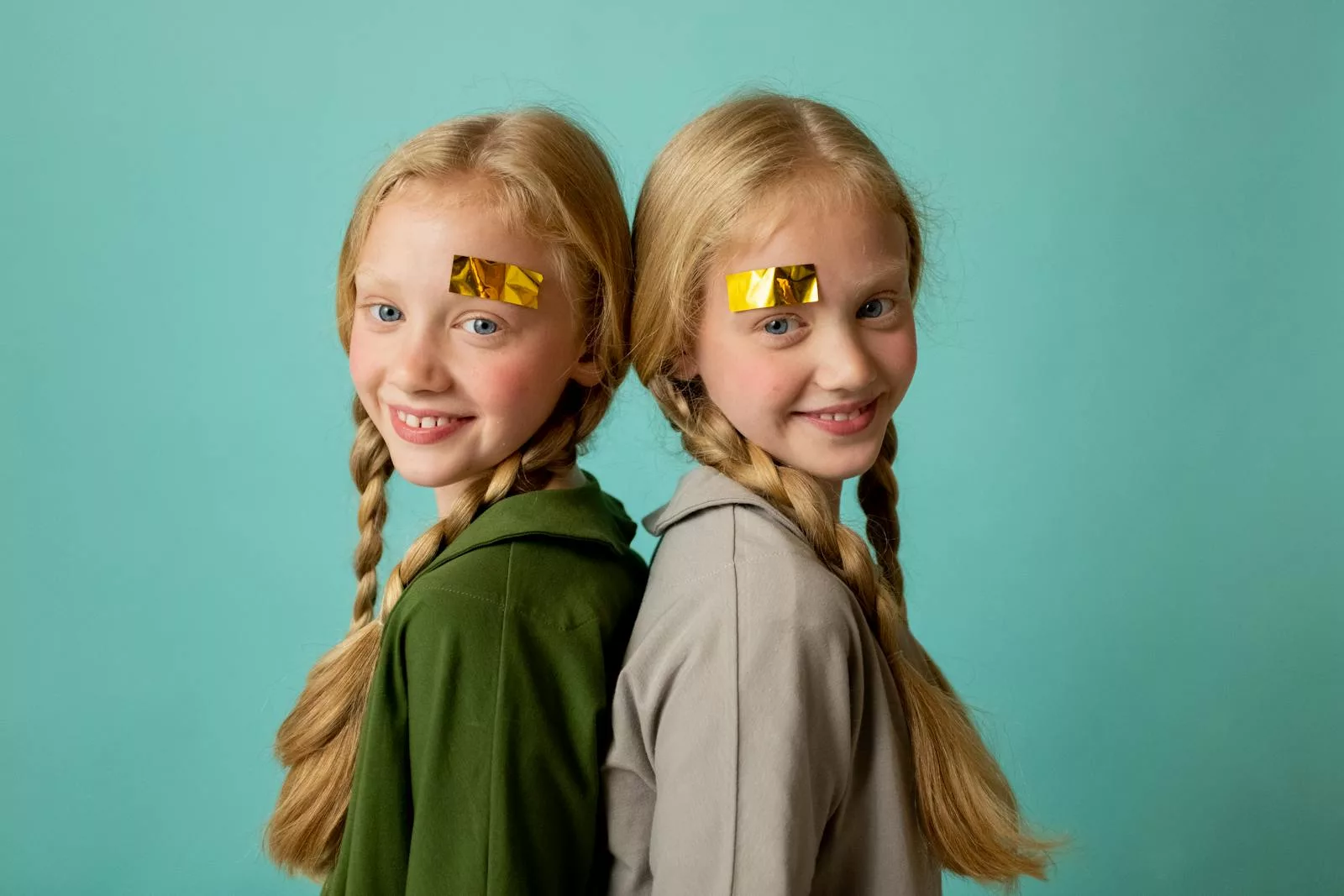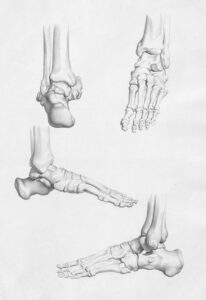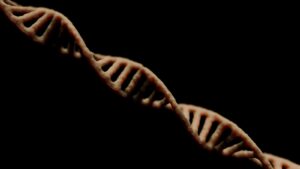Twins have long fascinated humanity, representing both the marvels and mysteries of biology. Among the various types of twins, mirror twins—a rare subset of identical (monozygotic) twins—stand out for their extraordinary symmetry. These twins share a unique characteristic: their features and sometimes internal organs are mirrored across their bodies, as though one twin is a perfect physical reflection of the other. While most people are familiar with identical and fraternal twins, the phenomenon of mirror twins is lesser-known and less understood, making it a fascinating subject of study in biology, medicine, and psychology.
Mirror twins occur when a fertilized egg splits later than usual, approximately 9–12 days after conception. This delay in splitting leads to the mirroring effect, where one twin’s traits are reversed in the other. This mirroring can manifest in external features, such as opposite-handedness, birthmarks on opposite sides, or even hair whorls spiraling in different directions. In some cases, the mirroring extends to internal organs, a condition known as situs inversus, where one twin’s organs are arranged as a mirror image of the typical human anatomy.
The phenomenon of mirror twins is rare and poorly understood, but its study offers profound insights into embryonic development, genetics, and even human identity. This article explores the science behind mirror twins, the ways in which mirroring manifests, the medical implications, and the psychological and cultural dimensions of this remarkable phenomenon.
The Biology of Mirror Twins
What Are Mirror Twins?
Mirror twins are a type of identical twin, meaning they originate from a single fertilized egg that splits into two embryos. This splitting usually occurs between the fourth and eighth day after fertilization, resulting in twins that are genetically identical. However, in the case of mirror twins, the egg splits later than usual, typically between the ninth and twelfth day. This delayed separation results in the mirroring effect.
Unlike fraternal twins, who develop from two separate eggs and share approximately 50% of their DNA, mirror twins share nearly identical genetic material. However, their mirrored physical traits arise not from genetic differences but from the timing of their embryonic development. This delayed division causes the embryos to develop as reflections of each other, leading to both fascinating and occasionally problematic outcomes.
The Science Behind Mirroring
The mirroring seen in mirror twins is thought to occur because of the late splitting of the fertilized egg. By this point in development, the embryo has already begun forming the primitive streak, a structure that determines the left-right orientation of the body. When the egg splits at this stage, the resulting embryos develop opposite asymmetries. This process can affect both external features and internal organ placement, resulting in physical traits that are reversed in one twin compared to the other.
For instance, one mirror twin may be right-handed while the other is left-handed. Similarly, birthmarks, freckles, or other distinguishing features that appear on one side of a twin’s body will often appear on the opposite side of the other. In rare cases, the mirroring extends to the internal organs, with one twin exhibiting normal organ placement and the other having situs inversus, where organs like the heart, liver, and stomach are flipped to the opposite side.
External Traits of Mirror Twins
Handedness and Physical Symmetry
One of the most striking features of mirror twins is their opposite handedness. If one twin is right-handed, the other is almost invariably left-handed. This phenomenon underscores the profound symmetry that defines mirror twins and provides a fascinating glimpse into the developmental processes that shape handedness and motor function.
Other external traits, such as hair whorls and facial asymmetry, also often mirror each other. For example, if one twin has a clockwise hair whorl, the other may have a counterclockwise whorl. Similarly, subtle facial asymmetries—such as differences in the size of the eyes or the shape of the jawline—may be reversed.
Birthmarks and Scars
Birthmarks, moles, and scars are another area where mirroring is commonly observed. A birthmark on one twin’s right arm, for instance, might appear on the left arm of the other. This mirroring can also occur with scars if both twins experience similar injuries, highlighting how their mirrored development influences their overall appearance.
Internal Mirroring and Medical Implications
Situs Inversus: When Organs Are Reversed
One of the most extraordinary features of mirror twins is the potential for internal organ mirroring, known as situs inversus. This condition occurs when the internal organs of one twin are arranged as a mirror image of typical human anatomy. For example, the heart, which is usually located on the left side of the chest, may be on the right side in one twin.
While situs inversus is often harmless, it can pose challenges in medical settings. Diagnosing internal conditions or performing surgeries on individuals with situs inversus requires careful planning to account for the reversed organ placement. For mirror twins, this can be especially important if they require organ transplants, as their mirrored anatomy may complicate compatibility assessments.
Health Risks in Mirror Twins
Although most mirror twins are healthy, their unique development can sometimes be associated with medical complications. For example, the late splitting of the embryo increases the risk of conjoined twinning, where the twins remain physically connected. While this is rare, it highlights the delicate balance involved in twin development.
In addition, situs inversus, while typically benign, can occasionally be associated with Kartagener syndrome, a genetic condition that affects ciliary function and can lead to respiratory problems and infertility. Understanding the potential medical risks associated with mirror twinning is essential for providing appropriate care.
Psychological and Social Dimensions
Identity and Individuality
Mirror twins face unique challenges when it comes to establishing their individuality. As identical twins, they already share nearly identical genetic material and often look remarkably alike. The additional mirroring of physical traits can further blur the lines of identity, making it difficult for others—and sometimes even themselves—to differentiate between the two.
This mirroring can also lead to a deep sense of connection between mirror twins. Many report feeling an almost telepathic bond, where they intuitively understand each other’s thoughts and emotions. While this is a common experience among identical twins, the mirrored nature of their physical traits may reinforce this connection, creating a sense of duality that is both comforting and challenging.
Social Perceptions and Relationships
In social contexts, mirror twins often attract curiosity and attention. Their mirrored traits can be a source of fascination for friends, family, and strangers alike. However, this attention can also feel intrusive, particularly if it focuses on their physical differences rather than their individual personalities.
Mirror twins may also experience unique dynamics in their relationships. The intense bond between them can sometimes lead to feelings of dependency, making it difficult to form independent identities or relationships outside the twin dynamic. Conversely, the symmetry and balance they share can foster a sense of mutual support and understanding that is unparalleled in other relationships.
Mirror Twins in Culture and Mythology
Symbolism of Duality
The concept of mirrored twins has long held symbolic significance in various cultures and mythologies. In many traditions, twins are seen as representations of duality—light and dark, good and evil, or balance and chaos. Mirror twins, with their striking symmetry, embody this duality in a literal sense, making them a powerful symbol of balance and reflection.
In some cultures, twins are believed to possess mystical or spiritual powers, and the mirroring seen in mirror twins may amplify these perceptions. Their unique appearance and connection can inspire awe, curiosity, and even reverence, highlighting the deep cultural fascination with the phenomenon of twinning.
Depictions in Media
Mirror twins have also made their way into popular media, often serving as a metaphor for duality or identity. From literature to film, the concept of mirror twins is used to explore themes of connection, individuality, and the blurred lines between self and other. These depictions, while often dramatized, reflect the enduring fascination with the unique bond shared by mirror twins.
Research and Scientific Advancements
Understanding Embryonic Development
The study of mirror twins offers valuable insights into the processes that govern embryonic development. By examining the timing and mechanisms of twin formation, researchers can gain a better understanding of how physical traits and asymmetries are established in the body. This knowledge has implications for fields ranging from developmental biology to regenerative medicine.
Advances in Twin Studies
Mirror twins also play an important role in twin studies, which investigate the interplay of genetics and environment in shaping human traits. Because mirror twins are genetically identical but often exhibit opposite physical traits, they provide a unique opportunity to explore how development and environmental factors influence phenotypic expression.
Mirror twins are a rare and extraordinary phenomenon, offering a unique glimpse into the complexities of human development and identity. From their mirrored physical traits to their profound psychological bond, they challenge our understanding of individuality and connection, highlighting the delicate interplay between genetics, biology, and environment.
As science continues to unravel the mysteries of mirror twins, their study not only deepens our knowledge of twinning but also underscores the incredible diversity and adaptability of the human body. By celebrating the uniqueness of mirror twins, we embrace the complexity of nature and the endless possibilities it holds.




